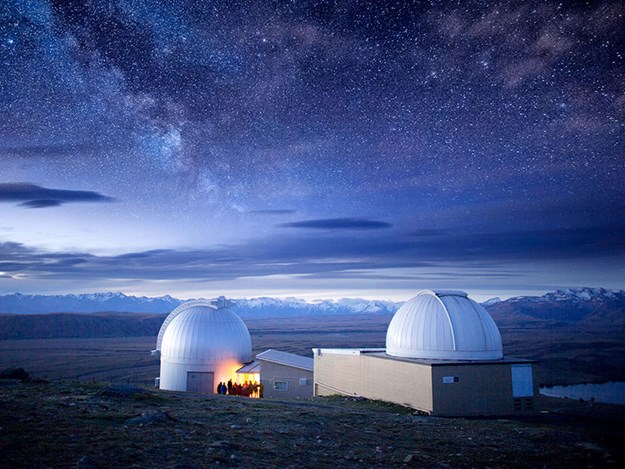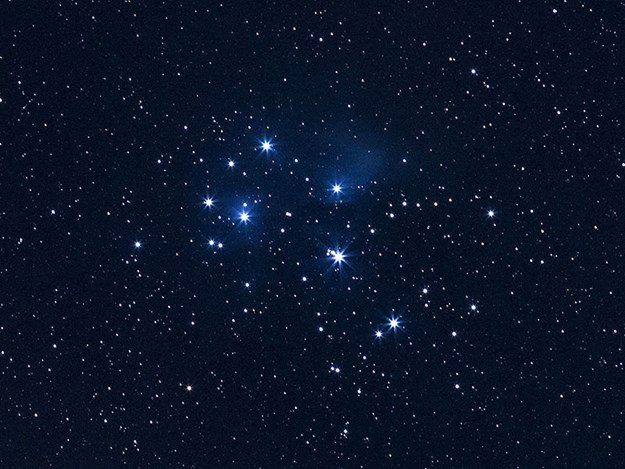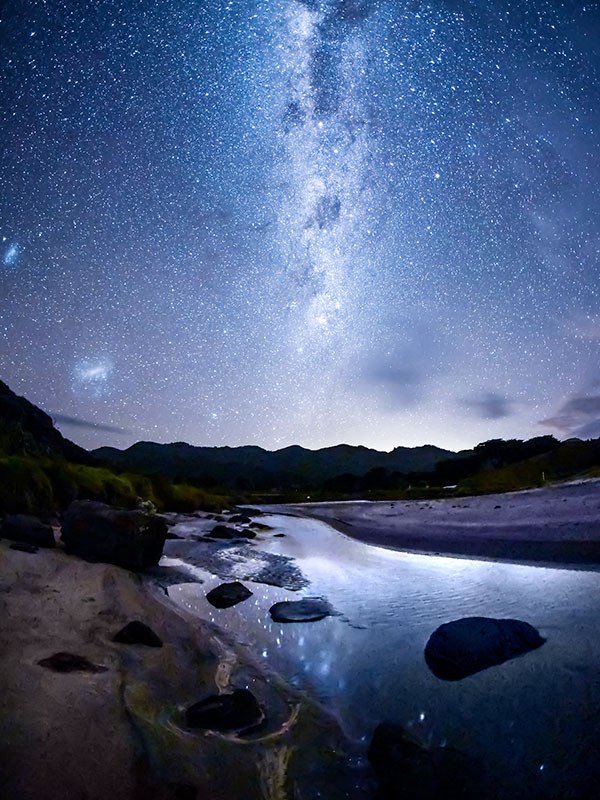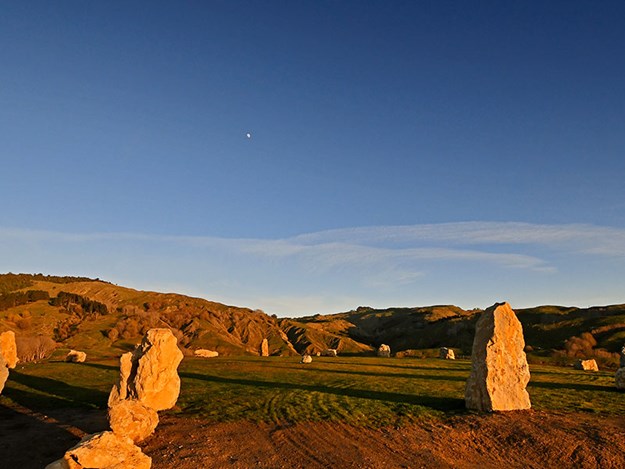 |
Mt John Observatory, Tekapo |
Believed to have formed more than 100 million years ago the Matariki cluster plays a pivotal role in modern and ancient Māori mythology, its arrival signalling an ending and a beginning. It gives people the chance to connect with their whanau (family) to reminisce and reflect on the year that has passed and rejoice and rejuvenate for the new year that lies ahead.
Matariki takes place in mid-winter from late May or early June – the dates vary according to tribes and geography – as the stars reappear to the human eye just before dawn throughout winter and early spring.
Like many cultures, food plays an integral role in rituals and life of Māori. Traditionally, Māori believed the earth was the giver of life. From the earth came food and so Matariki was a time of ceremonial offering to Māori land gods Rongo and Uenuku in the hope of a bountiful harvest in the year to come.
With Matariki arriving in winter the annual harvest and stockpiling for the harsh months ahead became a priority. Once the harvesting was complete it was time to celebrate with kai (food) often cooked in a hangi in the ground and shared with whanau and friends.
 |
The Matariki cluster |
Modern Matariki
Matariki celebrations were popular for Māori before the arrival of the Europeans. The festivals continued into the 1900’s but eventually they died out in the 1940s. However, the beginning of the 21st Century marked the revival of Matariki and the event continues to rise in popularity.
The first modern day Matariki celebrations took place in Hawke’s Bay in 2000. Around 500 people took part in that first festival but by 2003 numbers had risen to 15,000. Matariki has continued to play an important role in the life of modern-day Māori and New Zealanders. This astronomical event inspires a selection of festivals that take place around the country.
 |
Great Barrier Island is now a Dark Sky Sanctuary, and a great place to view Matariki |
Starry, Starry Night
Matariki’s focus on the night sky is fitting as New Zealand boasts some of the best stargazing opportunities in the world.
Aoraki Mackenzie is a gold-rated dark sky reserve, in recognition of the quality of the almost light-pollution-free skies of the Mackenzie Basin. The 4300sq km area is bounded by a spectacular alpine landscape with the Southern Alps in the west, and the Two Thumb Range in the east.
The dark sky reserve is located in the Mackenzie Basin, in the South Island of New Zealand, and includes Aoraki Mt Cook National Park and the villages of Lake Tekapo, Twizel and Mt Cook. The Mt John Observatory is New Zealand’s premier scientific astronomy observatory and is based in Tekapo. The observatory site was chosen in 1963 for the clarity and darkness of the night sky after three years of site testing.
Mt John is operated by the University of Canterbury and the on-site team includes astronomers from Japan’s Nagoya University. The USA and Germany have also invested in Mt John facilities.
Aotearoa New Zealand also has two Dark Sky Sanctuaries in the skies above the islands of Great Barrier (north of Auckland) and Stewart (south of Invercargill).
 |
A new mātai whetu, a place to view the stars, at Hakikino in Hawke’s Bay was unveiled last year |
When to Observe Matariki
The optimum time to observe the rising of Matariki is in the phase of the moon known as Tangaroa, the moon of plenty. The Tangaroa moon phase occurs in the three or four days leading to a new moon and will fall on different dates each year. This year, the rising dates are 13-20 July.
To see the cluster, look to the north-east horizon just before sunrise. Find the Tautoru constellation (also known as Orion’s belt or ‘the pot’). Trace a line northward from the three stars of Tautoru. Look for a faint sparkle of tiny dots, about the same width as Tautoru is long. This is the Matariki star cluster.





